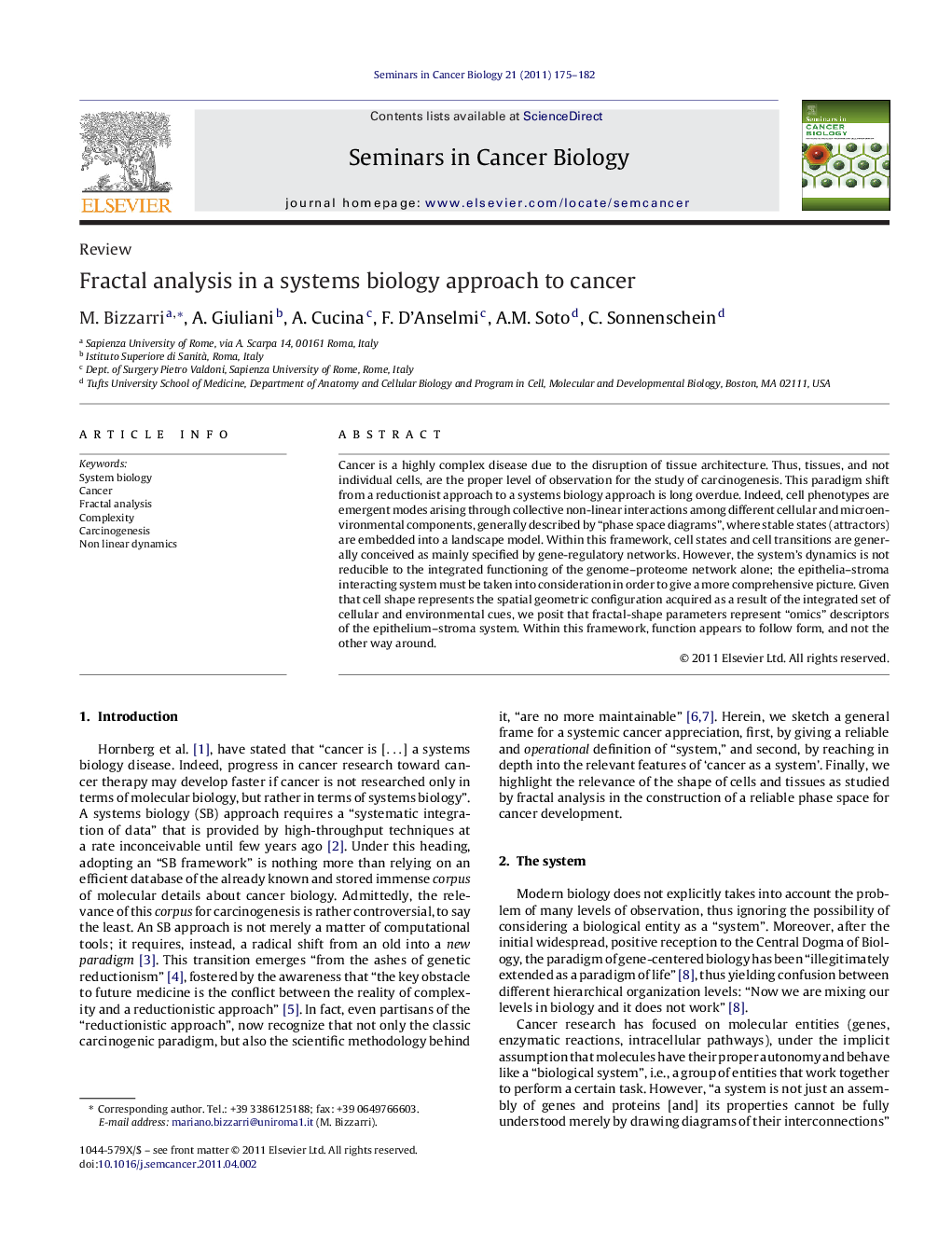| Article ID | Journal | Published Year | Pages | File Type |
|---|---|---|---|---|
| 2024004 | Seminars in Cancer Biology | 2011 | 8 Pages |
Cancer is a highly complex disease due to the disruption of tissue architecture. Thus, tissues, and not individual cells, are the proper level of observation for the study of carcinogenesis. This paradigm shift from a reductionist approach to a systems biology approach is long overdue. Indeed, cell phenotypes are emergent modes arising through collective non-linear interactions among different cellular and microenvironmental components, generally described by “phase space diagrams”, where stable states (attractors) are embedded into a landscape model. Within this framework, cell states and cell transitions are generally conceived as mainly specified by gene-regulatory networks. However, the system's dynamics is not reducible to the integrated functioning of the genome–proteome network alone; the epithelia–stroma interacting system must be taken into consideration in order to give a more comprehensive picture. Given that cell shape represents the spatial geometric configuration acquired as a result of the integrated set of cellular and environmental cues, we posit that fractal-shape parameters represent “omics” descriptors of the epithelium–stroma system. Within this framework, function appears to follow form, and not the other way around.
